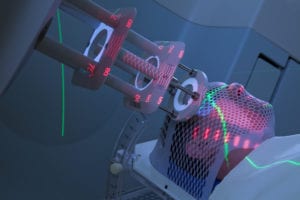Are Lasers Effective Skin Cancer Treatment?
- Posted on: Nov 15 2019
Watch Videos About Mohs Surgery Here!
 Skin cancer is the most prevalent of all types of cancers in the United States. This condition in all of its forms is an enormous burden to patients as well as to the healthcare system as a whole. Standard treatments have been developed over the years to treat all stages of skin cancer. However, none are without inherent risks. Currently, dermatologists have techniques such as surgical excision, photodynamic and topical therapies, electrodessication and curettage, and cryosurgery at their disposal. More recently, doctors have been educating themselves on the Mohs micrographic surgery technique. Amidst all of these treatments, patients often ask about laser treatment for skin cancer. Here, we discuss what laser treatment involves and what patients need to know.
Skin cancer is the most prevalent of all types of cancers in the United States. This condition in all of its forms is an enormous burden to patients as well as to the healthcare system as a whole. Standard treatments have been developed over the years to treat all stages of skin cancer. However, none are without inherent risks. Currently, dermatologists have techniques such as surgical excision, photodynamic and topical therapies, electrodessication and curettage, and cryosurgery at their disposal. More recently, doctors have been educating themselves on the Mohs micrographic surgery technique. Amidst all of these treatments, patients often ask about laser treatment for skin cancer. Here, we discuss what laser treatment involves and what patients need to know.
Lasers work by emitting a narrow beam of single-wavelength light. This beam is highly-intense, which is what gives lasers their power. Due to their precision and adaptability, lasers are often used to complete intricate surgical work. In the field of dermatology and aesthetic medicine, lasers are also used to remove skin lesions and to improve the appearance of the skin.
Does that mean lasers can eliminate skin cancer?
No. Where lasers fit into the realm of skin cancer treatment is to remove precancerous lesions. Lasers do this by vaporizing the uppermost layers of the skin. The benefit of this technique for precancerous lesions and, in limited cases, very early basal cell carcinomas, is that the procedure is relatively short and healing occurs more quickly. Also, laser can treat multiple lesions at once.
The Objective of Skin Cancer Treatment
Laser surgery for actinic keratosis and thin basal cell carcinomas is intended to obliterate cancer cells that are limited to the epidermis only. When laser energy is directed at a lesion, abnormal cells are destroyed by heat. To destroy a deeper lesion with heat would pose a risk of thermal damage to surrounding tissue. When treating skin cancers, dermatologists operate with two objectives. The first is to remove the entirety of the lesion made of abnormal cells. The second is to preserve as much of the skin’s appearance as possible.
To date, the technique that best achieves both of these objectives is Mohs micrographic surgery. As more patients are requesting this procedure, more doctors obtaining the necessary training to perform Mohs. We are proud to help both.
If you are a patient in search of a Mohs physician, browse our physician directory. If you are a dermatologist interested in expanding your practice to offer Mohs surgery, connect with us at (800) 616-2767.
Posted in: Uncategorized


